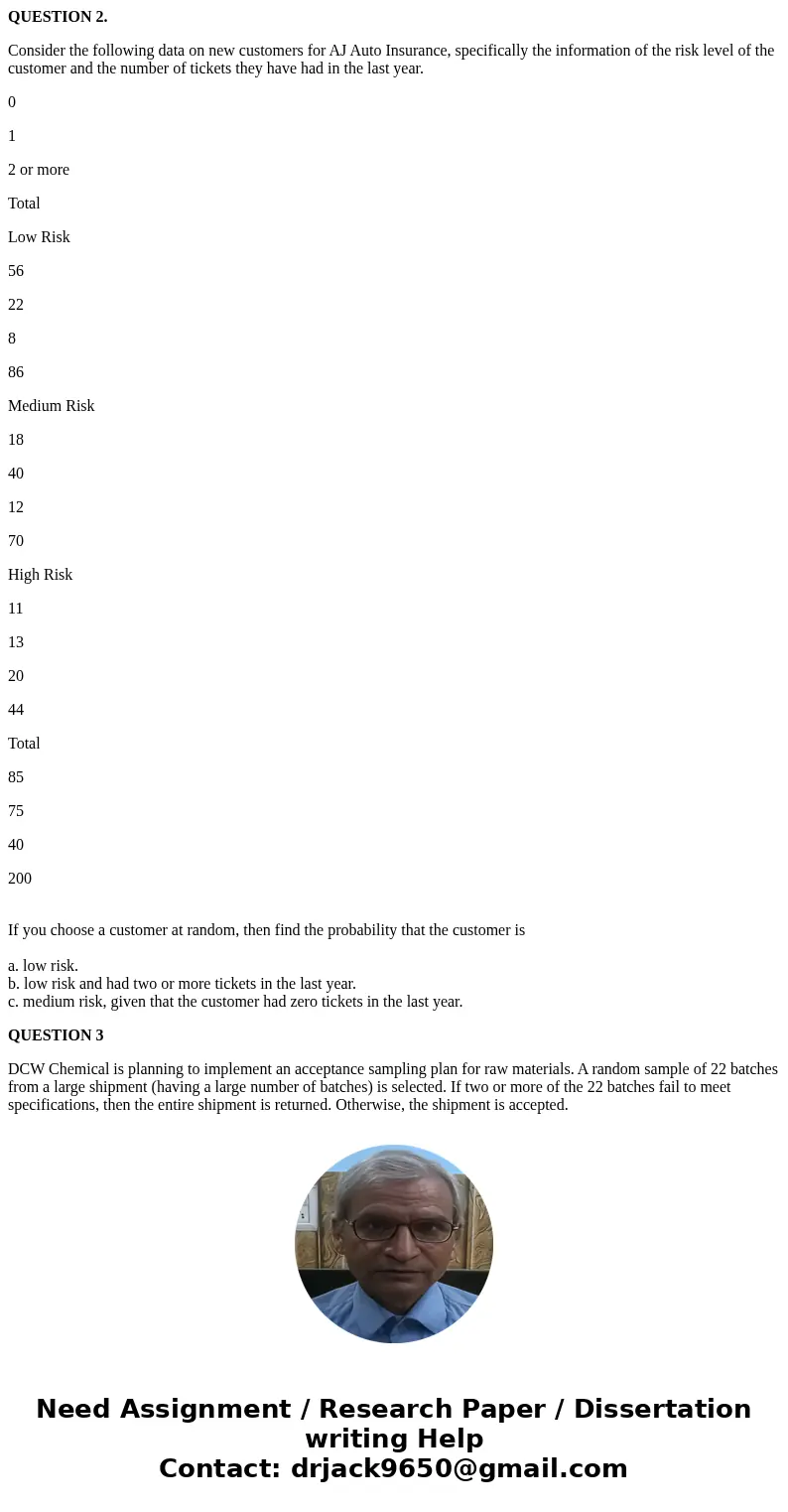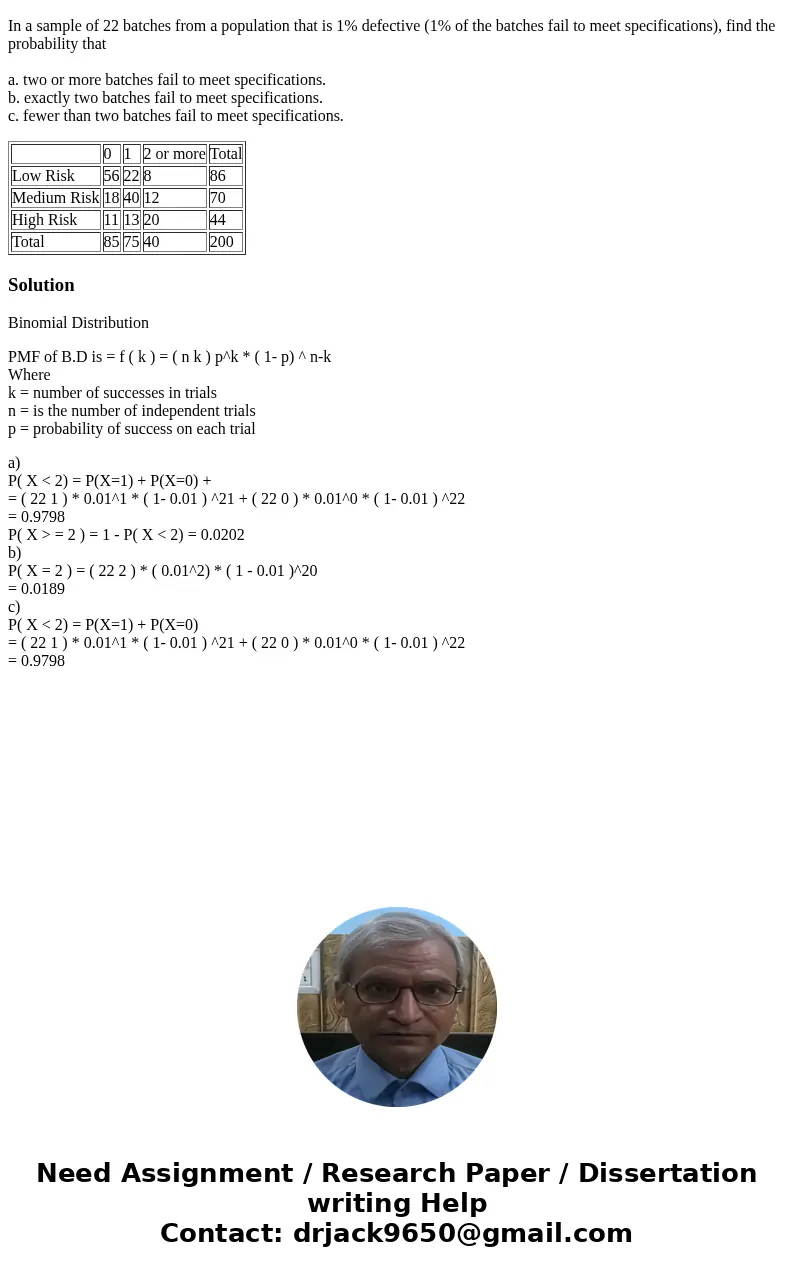QUESTION 2 Consider the following data on new customers for
QUESTION 2.
Consider the following data on new customers for AJ Auto Insurance, specifically the information of the risk level of the customer and the number of tickets they have had in the last year.
0
1
2 or more
Total
Low Risk
56
22
8
86
Medium Risk
18
40
12
70
High Risk
11
13
20
44
Total
85
75
40
200
If you choose a customer at random, then find the probability that the customer is
a. low risk.
b. low risk and had two or more tickets in the last year.
c. medium risk, given that the customer had zero tickets in the last year.
QUESTION 3
DCW Chemical is planning to implement an acceptance sampling plan for raw materials. A random sample of 22 batches from a large shipment (having a large number of batches) is selected. If two or more of the 22 batches fail to meet specifications, then the entire shipment is returned. Otherwise, the shipment is accepted.
In a sample of 22 batches from a population that is 1% defective (1% of the batches fail to meet specifications), find the probability that
a. two or more batches fail to meet specifications.
b. exactly two batches fail to meet specifications.
c. fewer than two batches fail to meet specifications.
| 0 | 1 | 2 or more | Total | |
| Low Risk | 56 | 22 | 8 | 86 |
| Medium Risk | 18 | 40 | 12 | 70 |
| High Risk | 11 | 13 | 20 | 44 |
| Total | 85 | 75 | 40 | 200 |
Solution
Binomial Distribution
PMF of B.D is = f ( k ) = ( n k ) p^k * ( 1- p) ^ n-k
Where
k = number of successes in trials
n = is the number of independent trials
p = probability of success on each trial
a)
P( X < 2) = P(X=1) + P(X=0) +
= ( 22 1 ) * 0.01^1 * ( 1- 0.01 ) ^21 + ( 22 0 ) * 0.01^0 * ( 1- 0.01 ) ^22
= 0.9798
P( X > = 2 ) = 1 - P( X < 2) = 0.0202
b)
P( X = 2 ) = ( 22 2 ) * ( 0.01^2) * ( 1 - 0.01 )^20
= 0.0189
c)
P( X < 2) = P(X=1) + P(X=0)
= ( 22 1 ) * 0.01^1 * ( 1- 0.01 ) ^21 + ( 22 0 ) * 0.01^0 * ( 1- 0.01 ) ^22
= 0.9798


 Homework Sourse
Homework Sourse